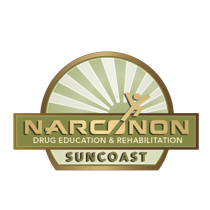While the Heroin Crisis Surges, Officials Say Meth Problem is Getting Worse

Heroin is a scary drug. Anyone who hears stories about the massive amount of opiate overdoses happening throughout the country and still wants to try it is clearly out of their minds, or already an addict. I can’t imagine anyone would willingly try heroin for the first time, given how much of a gamble it is to take it. Meth has been a growing problem for a long time. It’s growing along with the opiate epidemic, although most of the country’s attention is on the opiate crisis. But, in some areas of the country, opiate use is declining, but meth use is growing. There are a few factors that could possibly influence addicts to switch their drug of choice, such as the fear of overdosing and dying. Overdose is something you rarely hear about, however, when it comes to meth. In one New York town, it seems people are actively switching from heroin to meth, and it has officials concerned.
In Olean, New York, local law enforcement has done a great job at reducing the city’s heroin problem but just as they started to get that problem under control, it seems like meth has gained some serious popularity. Local officials believe heroin addicts are switching to meth for a variety of reasons. Opiate overdoses were a regular occurrence in the city at one point. The opiate crisis reached epic proportions last June. There were 3 deaths in the span of a week and the county saw 11 overdoses in the beginning of 2017. Then everything slowed down and heroin became harder to get. But just as that was slowing, meth started becoming a major problem. In the last 3 months, 3 meth labs have been found in residential homes and dismantled by the police.
Dr. Kevin Watkins, Cattaraugus County public health director and chair of the county’s Heroin-Opioid Task Force said: “Because heroin can be so unpredictable, we’re now seeing maybe a conversion back to methamphetamine for some drug users because they want to live and they don’t want to take that chance.” It seems like people are taking less of a chance on heroin and doing meth instead.
The scary part about the meth labs is that they’re not as large and intricate as they used to be. In fact, the meth labs found in Olean were found to be using what’s called the “one pot” method. It’s an easy technique to make small amounts of meth and it usually involves mixing all of the caustic chemicals in one container, simplifying the process, although it’s still just as dangerous as traditional means of cooking the drug. The containers can easily explode and give off dangerous fumes. Making meth this way is pretty basic and almost anyone can figure out how to do it. It usually yields small amounts of low-grade meth.
It’s pretty frightening to think that while combating one drug, a problem with another drug emerges. And it’s a drug that virtually anyone can make in the comfort of their own home. All they have to do is gather up a few chemicals, throw it in a container, and after some potentially hazardous chemical reactions, voila, there’s meth. We need to stop the madness because that’s what this is, pure madness. All we need are residential homes exploding from meth. If we don’t get this thing under control soon, the real zombie apocalypse will surely be upon us.
